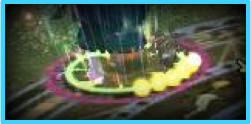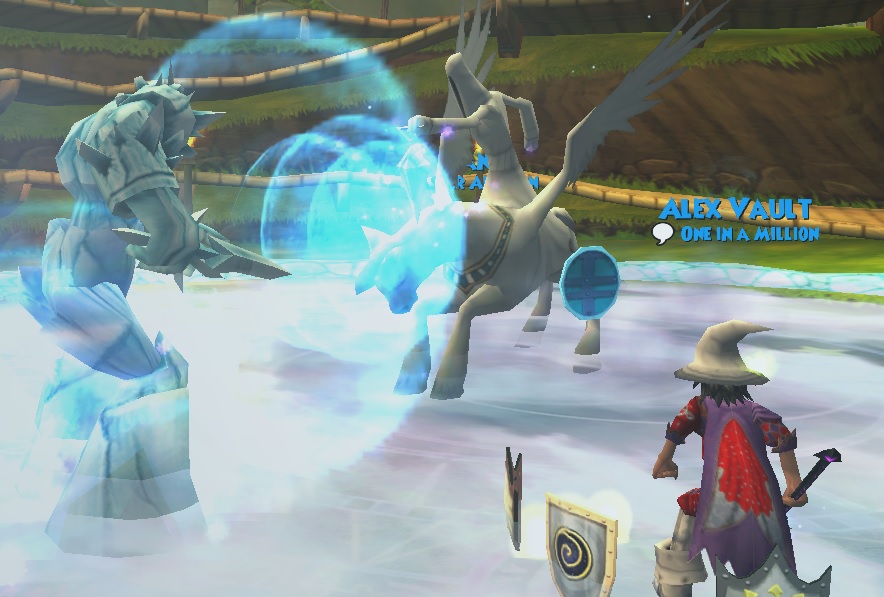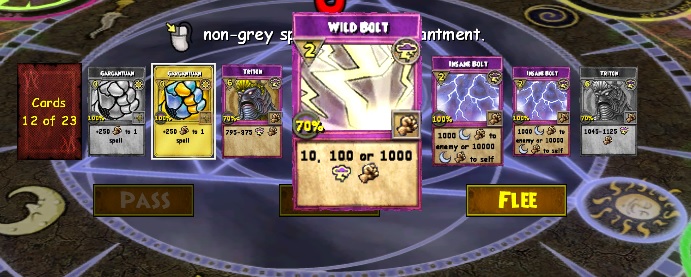November 1, 2017 December 9, 2018
From Zero to Hero:
Beginners’ PvP Guide
Part 3 – Fighting essentials
PvP is a fantastic Wizard101 endgame activity but it’s also the hardest one. Requirements to even survive in private ranks are insanely high, not to mention obtaining that shiny warlord badge. Sounds pretty scary, right? Don’t get discouraged though, we’ve got you covered. In this third installment of the Zero to Hero Beginner’s Guide we will be covering PvP fighting essentials.
This guide will be divided in four parts and hopefully we’ll cover everything you need to know to start being competitive in the Arena. Don’t get scared though about this wall of text, which is meant for privates. The road to higher ranks become significantly easier once you master the basics. Imagine this as a life process. It’s really hard to learn how to walk. However, once you do learn it, figuring out how to jump and run becomes a much easier task.
Before Starting with Randked PvP: Part 1 Non-Fighting Essentials: Part 2 School Specific Breakdown: Part 4
Strategy vs Tactics
While the difference between these two terms exists, not many people differentiate between the two. Although we apply these in everyday fights, we do it subconsciously and often don’t know the difference. We can look at Strategy as the Macro perspective and Tactics as the Micro one.
Strategy without tactics is the slowest route to victory. Tactics without strategy is the noise before defeat ~ Sun Tzu
Most of us have a certain goal in PvP and the way to achieve this goal is called your strategy. The most common goal in PvP is winning a match, so we can get higher rank. In order to achieve this, we can take several routes. We can be an offensive or a defensive player. We can be aggressive by constantly keeping the pressure on our opponents. These are our strategies. The tools to perform strategies are called tactics.
In order to get the most out of a fight, we have to harmonize our tactics with our strategy. What gear will we choose? Is it going to be the offensive House of Scales gear or the gear from Waterworks that is slightly more defensive? How will we fight in the battle? For defensive strategies we need to focus on shielding and healing, while with offensive strategies we’d opt for blade stacking.
Pip Management
So, you’re in a fight with 8 pips, Efreet in hand and your opponent doesn’t have any shields. It looks like a good opportunity to attack, but is it really? Pip management is one of the most important steps towards becoming a good tactician. You’ll often see (especially in low and mid levels) how players sit on a max amount of pips without attacking. That’s because they understand the importance of pips and know that the answer to the question above is “No”. If you don’t have enough blades and your opponent hasn’t lost a single point of health yet, they may just use a 4 pip Satyr. They’ll be back at full health, have more pips than you and you won’t have any pips to follow up with another attack. As such, this is not the right moment to attack just yet.
It’s important to note that pip management differs a lot on various levels. Because of all the shadow spells, pip management isn’t as necessary at Max levels as it is at low and mid levels. However, while pip management is more relaxed at max levels, you should still pay some attention to it. You don’t want to cast an elemental blade for example, if you’ve just wasted all of your pips. You also don’t want to sit on too many pips while fighting a Balance, since they won’t hesitate to Mana Burn you.

Tempo
 It can be a little hard to describe tempo, despite it being such a simple word. Tempo is the state of a game where you aim to stay ahead of your opponent. The final goal of a PvP match is to kill your opponent. We’ve already learned that strategy and tactics play a big role in reaching our goal. Tactics should follow your strategy, and these tactics go hand in hand with tempo. Playing aggressive and landing a big hit will put you ahead of the opponent. However, your opponent healing off the damage will put him ahead – something we’ve already talked about in Pip Management. In a duel you need to learn how to play cards properly to win the race.
It can be a little hard to describe tempo, despite it being such a simple word. Tempo is the state of a game where you aim to stay ahead of your opponent. The final goal of a PvP match is to kill your opponent. We’ve already learned that strategy and tactics play a big role in reaching our goal. Tactics should follow your strategy, and these tactics go hand in hand with tempo. Playing aggressive and landing a big hit will put you ahead of the opponent. However, your opponent healing off the damage will put him ahead – something we’ve already talked about in Pip Management. In a duel you need to learn how to play cards properly to win the race.
Whether you’ll have a slow or fast tempo depends on your strategy. Casting weaknesses and shields is a nice way to put you ahead of your opponents. But while they will protect you, they won’t always put you ahead. Say your opponent is going to use King Artorius. He has a weakness around his head and you have two stacked tower shields. You’re clearly ahead in this situation. But what if he’s going to use a wand first? Then all the debuffs will be gone and the tempo will turn to his advantage.
The same is true the other way around. Stacking blades will put you ahead, but this can be reset easily with Enfeeble or Earthquake. There are a lot of variables when it comes to tempo – I will describe the basic ones below. The most important thing here is experience. Of course you need the theory, but learning by playing matches is what really matters.
Buffs and Debuffs
When we talk about buffs and debuffs, we generally mean shields and blades. However, there is bit more to it than that. There are other ways of buffing and debuffing – some of which are better than others. Traps are generally seen as the worst method of buffing. The main reason is that they affect only the initial part of the hit. For example if you use a poison, the trap will affect only the first hit while the last 3 ticks won’t be affected. Blades and bubbles on the other hand will apply the damage boost to the complete spell. You should focus on blades and bubbles in the beginning of your PvP journey, since they’re the easiest to use and have the best effect on damage spells. Once you get comfortable with them, you can start experimenting with trap stacking or using feints.
 A similar situation rises with debuffs. On the one hand, you can use weaknesses and plagues, which are weaker but will have an effect on the complete spell (double hits, over time attacks). On the other, you can also use shields. These are stronger, but will stop only the initial hit. They are good versus single hit spells, but bad versus spells like Orthrus or Basilisk. Since shields are pretty strong by themselves, you should try to avoid using different types of shields (use 2x fire/storm shields, instead of 1x fire/ice and 1x fire/storm). That’s unless you’re facing an opponent using shadow shrike. In that case, different shields might protect you better. Please also notice that with weaknesses, it might be wise to stack 2 different types, since they are weaker. Still, keep in mind that one wand hit will get rid of both weaknesses at once.
A similar situation rises with debuffs. On the one hand, you can use weaknesses and plagues, which are weaker but will have an effect on the complete spell (double hits, over time attacks). On the other, you can also use shields. These are stronger, but will stop only the initial hit. They are good versus single hit spells, but bad versus spells like Orthrus or Basilisk. Since shields are pretty strong by themselves, you should try to avoid using different types of shields (use 2x fire/storm shields, instead of 1x fire/ice and 1x fire/storm). That’s unless you’re facing an opponent using shadow shrike. In that case, different shields might protect you better. Please also notice that with weaknesses, it might be wise to stack 2 different types, since they are weaker. Still, keep in mind that one wand hit will get rid of both weaknesses at once.
We already mentioned bubbles, but let’s talk about them some more. These 2 pips global spells that buff your attacks by leaving a “bubble” around the field. While blades are stronger, bubbles have other benefits. A blade will only affect one attack, while a bubble will buff everything as long as it stays up. In addition bubbles also serve as a “passive debuff”. This is due to the fact that, when you put your own up, you’re also removing the opponent’s. This means less damage for them, while simultaneously giving you more. You may have heard the term “bubble war” already. It’s when both duelists keep on using their own bubble to remove the opponent’s bubble. If I would have to choose one card as most important to have max copies of in deck – it would be a school bubble.
Minions
While minions are weak beings with a low amount of health and no resist, they can single handedly turn the tide of a battle. You don’t summon a minion with the goal of helping you damage the opponent. You summon it so it will blade you, break your opponent’s shields or give shields to you. Imagine a situation when your minion gives you a blade. If you blade the same round, that’s basically two turns combined in one! The general rule of minions in PvP is to always have your own up and kill your opponent’s as soon as possible. Lots of duelists will even go as far as shielding their minion in order to prolong their life.

Minions are also a great tool for pip control. Most minions cost 3 pips to cast. The most common ways to kill a minion is either using an aoe or an off-school attack. Using a minion will force your opponent to waste their blades on an AoE attack. Alternatively, it could also start cluttering their deck when they’re searching for an off-school attack. Now, imagine if you cast a tower shield on your minion. Suddenly a 4 pip off-school attack isn’t strong enough anymore to kill the minion! Just be careful how you use minions when facing death – your minion can be an amazing source of health for them because of death’s drain attacks.
Using minions at low levels is most beneficial. Players don’t have as much of an attack boost, decks are smaller and due to the lower health at lower levels, the minions can actually do some real damage. While minions start losing their popularity as you’re leveling up, they keep their usefulness. Even at max level — especially there — it may even happen that your opponent won’t have any off-school or low pip attacking spell.
Healing
 While it’s true that some strategies don’t require healing, often it’s better to use them. An important thing here is that you have to use your own school’s healing spells or spells with a mastery amulet. Using 4 power pips for a satyr is simply a bad investment. You’ll waste way too many pips for something that can easily be countered. It could be countered with another 4 or 6 pip attack or simply with an infection. And speaking of infections – you should always pack some sprites or fairies to get rid of pesky infections and clear your way to get back to full health from Satyr.
While it’s true that some strategies don’t require healing, often it’s better to use them. An important thing here is that you have to use your own school’s healing spells or spells with a mastery amulet. Using 4 power pips for a satyr is simply a bad investment. You’ll waste way too many pips for something that can easily be countered. It could be countered with another 4 or 6 pip attack or simply with an infection. And speaking of infections – you should always pack some sprites or fairies to get rid of pesky infections and clear your way to get back to full health from Satyr.
There’s a similar situation for the other way around. If you’re the agressor, you may want to put some infections (or maybe even doom and gloom) on your opponent to make their healing harder. They will either need to heal through the infection or spend another round to get rid of it. This extra round can mean a lot. You can get another infection to further postpone their healing, stun them or unleash another deadly attack. On the other hand, be careful when this happens to you. Get rid of infections as soon as possible so you won’t find yourself in any tricky situations.
Attacking
We’re finally there. The common misconception among new players is that attacking is the most important part of a PvP match. But as you see, we had to get through 2 parts of this guide, and another 6 chapters in this one to reach the attacking phase. Attacking is important, but if you’re just starting out, it shouldn’t be the first thing on your mind.
Another common misconception is that stronger is better. By that people mean that you should fill your deck with high damage, high pip spells. While single hits are indeed a good way to spike damage, you need other spells as well. For example, you will need shield breakers. Damage over time or double hits are perfect candidates for this job. But before you rush to blade up and hit with a bone dragon, think about which counters your opponent can apply to that DoT. There’s triage, which removes the tick. It’s a super easy way to completely negate all your efforts.

Another popular type of attack is utility hits. These are spells that attack your opponent and leave an aftereffect – either in the form of buffing you or debuffing them. The reason why these spells are so good is that they basically allow you to do in one round what you’d otherwise need two for. For example Luminous Weaver will let you do some damage while also putting a weakness on your opponent. Another great one is Hephaestus, which will put up a bubble while also doing damage.
Here’s the most important thing about attacking. Unless you’re hitting a minion – DO NOT attack WITHOUT a sun enchantment. Players tend to have a lot of resist, so you need a lot of damage to counter that. Train sun enchantments and buy tc monstrous/gargantuan. Pre-enchant your attacks and add them to your side deck. Just go to Golem Court or on Unicorn Way, fill your main deck with desired attacks and side deck with sun enchantments. Start drawing and placing tc’s on your attacks and don’t use them yet. Flee and add the newly created cards in the side of your main PvP deck.

Combinations
 Now that we’ve gone over attacks, we need to learn about combo’s – combinations. You might know that you need to use frostbite to destroy your opponent’s shields, but still, these can not kill. The way to kill is by using combinations. It’s the most powerful way to kill your opponent. A single hit won’t do much. But a strong hit, followed by another one or maybe even two, will leave a nice amount of damage and put your opponent in a dire situation.
Now that we’ve gone over attacks, we need to learn about combo’s – combinations. You might know that you need to use frostbite to destroy your opponent’s shields, but still, these can not kill. The way to kill is by using combinations. It’s the most powerful way to kill your opponent. A single hit won’t do much. But a strong hit, followed by another one or maybe even two, will leave a nice amount of damage and put your opponent in a dire situation.
We need to use everything we’ve learned so far in order to successfully perform a combination. This means we have to maintain pip control and buff ourselves to make our attacks stronger. Simultaneously, we need to keep debuffing our opponent, healing and using minions as a distraction to survive. When you’ve reached the point where you have full pips, have blades spinning around your head and shields securing your body, then and only then are you ready to unleash a powerful combination of attacks.